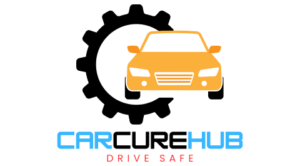Surprising fact: the average price for a new car in early 2024 hit about $46,992 — and that sticker can reshape your budget overnight.
We know how exciting a new vehicle can feel. But excitement plus today’s price environment can push buyers into costly choices.
We’ll walk with you through a clear process — from setting goals to asking the right questions at the dealer.
Simple moves save time and money: check total ownership costs, compare third-party values, and get financing lined up before you sit down to negotiate.
Our aim is practical. We help you keep emotions in check, spot common traps, and turn market pressure into confident decisions.
Key Takeaways
- Know the full price, not just the monthly payment.
- Gather reliability, safety, and ownership cost information first.
- Get preapproval and compare out-the-door quotes.
- Test drive for at least 30 minutes and avoid anchoring to sticker.
- Sequence negotiations: trade, price, then financing to protect your money.
Why today’s car market amplifies common mistakes
Today’s market forces buyers to act faster and smarter than a few years ago. Inventory shortfalls and higher prices mean small slips cost real money.
Michelle Krebs at Cox Automotive says new-vehicle inventory is roughly 2.5 million units below 2019. That gap pushes us to cast wider nets and check more lots for the right vehicle.
Edmunds’ Ivan Drury notes many people now pay the sticker — or above — as days on the lot hit record lows.
“Cars often sell before they arrive.”
That reality changes negotiation. The sticker price can become a starting point or a floor. We suggest expanding your search radius, comparing trims, and asking dealers about incoming or in-transit units to avoid missing a match.
- Call ahead and request VIN-specific out-the-door quotes.
- Get multiple dealer quotes and bring preapproved financing.
- Quickly verify reliability and options so you don’t rush and lose money.
Guide on Avoiding Common Car Buying Mistakes: a quick roadmap
Start with clear goals—what you drive, carry, and how long you’ll keep a vehicle. That frame sets a realistic budget and narrows trims that actually fit your life.
We build a simple process: pick a target price range, shortlist two to four contenders, and pull safety and reliability data before we shop. Doing that saves time and prevents buyer’s remorse.
Set goals and budget first, then shop the vehicle
Make sure your budget matches total ownership costs — not just monthly numbers. Consumer Reports says settle the vehicle price first. Don’t let monthly payments steer the deal.
Sequence your deal: price, trade-in, financing—never all at once
We lock a clean price, then add the trade-in, then compare financing. That order protects your leverage.
Lock the out-the-door price before talking payments
Ask dealers only for the out-the-door figure — taxes, fees, and add-ons included. If a store refuses a written out-the-door quote, we walk away.
| Step | Action | Why it matters |
|---|---|---|
| 1 | Define needs and budget | Prevents impulse picks and narrows search |
| 2 | Shortlist models + check ratings | Avoids surprises from reliability or safety gaps |
| 3 | Request written out-the-door quotes | Enables apples-to-apples comparison |
| 4 | Negotiate price, then trade, then financing | Keeps each element transparent and fair |
“Let’s finalize the out-the-door price first; payments come after.”
- Know dealer cost: start at invoice, subtract incentives and holdback to find a fair negotiation baseline.
- Save every quote—emails and texts make it easier to compare and leverage better offers.
- Bring preapproval and test drives; then you’re ready to buy car with confidence.
Letting emotion drive the purchase instead of information
It’s easy to let a great test drive turn into an emotional decision—and that can cost you. We urge a calm, fact-first approach so emotion doesn’t set the price.
Don’t “fall in love” with one model. Consumer Reports warns that skipping ratings and reliability checks often leads people to pay more or choose a vehicle that underperforms.
Compare models side by side. Use safety scores, long-term reliability data, and real-world value to replace feelings with information. That shows trade-offs clearly.
New vs. used: real value
New cars can lose about 20% of their value in year one. That makes certified pre-owned or late-model used vehicles attractive if we want the same features for less money.
- Check CPO warranties and history reports.
- Assign a price to each want so you don’t pay luxury money for a rarely used feature.
- Pause after a test drive—sleep on it and compare at least one alternative.
“A well-rated CPO can give you the features you want with far less early depreciation.”
Ask practical questions: does this model fit car seats, garage space, and your commute? If a trim is rare or overpriced, find comparable vehicles that meet your needs at a fairer price.
Skipping the full test drive and fit check

Short, token drives rarely mirror your real daily experience with a car or vehicle. Consumer Reports recommends at least a 30-minute test that covers highway, city, and parking to reveal comfort and handling.
We build a simple plan that respects your time. Start with a highway stretch, then a neighborhood loop and a few tight parking moves. Schedule multiple back-to-back drives at the dealership so differences stay fresh.
Do a fit check for seats, visibility, steering reach, and cargo. Turn off the radio and listen for wind or road noise. Pair your phone and run CarPlay or Android Auto to confirm tech works the way you want.
Inspect the lot vehicle in daylight for paint, panel gaps, and tire wear. Try a family fit — car seats, strollers, or tall passengers. Pack your usual gear into hatchbacks and SUVs to confirm space.
When unsure, take a second drive on a different route. Finish with a quick go/no-go checklist so you only move forward if the vehicle feels right today and for years to come. Make sure your choice truly fits.
Negotiation pitfalls: sticker price anchoring and monthly-payment traps
A sloppy negotiation hands dealers leverage; we keep control with a clear plan. Anchoring to the sticker or a low monthly payment hands away your bargaining power. Focus on a fair price first.
Negotiate from dealer cost, not the sticker
Ask the dealer for invoice details and subtract incentives or holdback. Consumer Reports recommends starting slightly above that number.
That reframes the deal around a fair target and stops MSRP inertia.
Keep price, trade-in, and loan terms separate
Lock the vehicle price first. Then discuss trade value. Finally compare financing or a car loan.
This three-step process prevents one area from hiding markups in another.
Focus on the out-the-door price to avoid hidden markups
Get a written out-the-door quote that lists taxes, fees, and add-ons. Insist every fee appears on the buyer’s order.
“I’m not discussing payments until we agree on the out-the-door price for this vehicle.”
- Watch for paint protection, VIN etching, and bogus dealer fees — decline them politely.
- Compare your preapproved rate with the store’s interest offer before signing.
- Keep documentation; the contract should match the agreed out-the-door number to the penny.
Financing mistakes that cost you thousands

How you fund a vehicle matters as much as the price you negotiate. A bad loan or surprise fees can add big sums over time.
Get preapproved — it sets your budget and blocks interest-rate bumping at the dealership. Consumer Reports warns dealers sometimes raise the offered rate at signing. A preapproval gives you leverage to demand better terms.
Get preapproved to avoid interest-rate bumping and bad terms
Preapproval helps spot credit issues early. It also shows dealers you have options. With a written offer, you can still accept dealer financing if it truly beats your rate.
Compare banks, credit unions, and dealer incentives
Shop lenders side by side — banks, credit unions, and dealers. Compare APR, fees, and length of the loan. Small rate differences change the monthly payment and total interest a lot.
- Tip: Keep taxes and title out of the loan when you can — that reduces the interest you pay.
- Tip: Time credit pulls within a short window so bureaus count them as one shopping event.
“Review the finance menu carefully — add-ons can inflate your payment.”
Before you sign, verify the out-the-door price, confirm rate and term, and keep copies of every page. Run a quick checklist: loan amount, rate, term, payment, and total interest. Recalculate if anything changes.
Overlooking total cost of ownership and add-ons
Small dealer add-ons and rising premiums quietly change what a vehicle costs. We map the full picture so your budget matches reality — not just the sticker.
Insurance and maintenance matter. Auto premiums jumped more than 20% from 2023 to 2024 (BLS). That alone can add serious monthly expense.
Insurance trends, maintenance ranges, and warranty decisions
Expect average maintenance near $900 per year. Brands vary — Acura can be about $680, while Audi may exceed $1,300. We recommend checking brand averages before you decide.
Think about how long you’ll keep a vehicle and whether an extended warranty truly covers likely repairs. If it doesn’t, we suggest saving the money instead.
Say no to unnecessary extras: paint, fabric, rustproofing, VIN etching
Consumer Reports notes modern cars already have corrosion protection. Dealers often push paint sealants, fabric guards, and VIN etching at high markups.
- Decline add-ons you don’t need — they raise your out-the-door price and cost you money over time.
- DIY VIN etching kits run under $25. Dealers charge around $200.
- Remove unwanted items from the buyer’s order before signing — it’s your purchase, your rules.
We help you total monthly ownership costs — insurance, maintenance, fuel, and depreciation — so the final purchase gives you real value and predictable costs you can carry comfortably.
Trade-in and used-car due diligence
A smart trade-in begins with research — then uses competing offers to gain leverage. We start by checking retail and wholesale numbers so we don’t give away hard-earned equity.
Set your floor with Kelley Blue Book and Edmunds
Use KBB and Edmunds to set a realistic trade floor. Adjust for mileage, options, and condition. That floor becomes your negotiation baseline at the dealership.
Shop instant offers and bring proof
Get instant cash quotes from CarMax, Carvana, or similar sites. Use the best offer to push the dealer higher. Bring service records, spare keys, and a clean car for appraisal day.
Inspect, verify, and compare apples to apples
Order an independent mechanic inspection for any used car you might buy. A written report gives strong negotiating leverage — or a reason to walk away.
- Check VIN history for accidents, title issues, and recalls.
- Get a payoff quote if you still owe a loan to avoid rolling negative equity into the next price.
- Convert offers to out-the-door numbers with your trade applied to compare the true value.
Due-diligence checklist: KBB/Edmunds floor, instant offers, inspection report, VIN/history, payoff figure, and final out-the-door math. Do this and we buy car with data — not pressure.
Conclusion
Before you sign, pause and verify the facts—this small step saves real money.
Use a strong, simple checklist: confirm the out-the-door price, match the written numbers to the quote, and lock the monthly payment only after price is set. This keeps the deal focused and fair.
Secure preapproval for financing or a loan so dealers know you have options. Test the fit again, weigh a used car if it meets needs, and refuse extras you don’t want at the dealership.
Watch total cost — insurance, maintenance, and interest matter as much as sticker numbers. With patience and this process, buyers can still find a good deal on a new car or used purchase in today’s market.
FAQ
How should we set a realistic budget before visiting dealerships?
Start by calculating take-home pay and monthly non-car expenses. Decide the total purchase figure you can afford — including taxes, registration, insurance, and a buffer for maintenance. We recommend using the out-the-door price rather than focusing on monthly payments.
Why does today’s market make it harder to get a good deal?
Low inventory and high demand push prices up and shorten negotiation windows. Vehicles spend fewer days on lot, so dealers are less flexible. That means we should shop multiple dealers, track market values, and be ready to walk away.
What’s the right sequence during negotiation?
Start with the vehicle price, then discuss trade-in value, and only after that agree on financing. Separating those elements prevents dealers from shifting numbers to hide markups or sweeten monthly payment illusions.
Should we ever negotiate from the sticker price?
No — sticker is an anchor. Instead, research dealer invoice or true market value with tools like Edmunds and Kelley Blue Book. Use those numbers to craft a fair offer and avoid overpaying.
How important is getting preapproved for a loan?
Very important. A preapproval sets a benchmark interest rate and gives us leverage with dealers. It helps avoid last-minute rate hikes and lets us compare dealer incentives against outside offers.
New or used — how do we choose considering depreciation?
New cars depreciate fastest in the first few years. Certified pre-owned cars often offer warranty coverage and lower price. Compare total cost of ownership — insurance, fuel, repairs — to see which option saves money over your ownership timeline.
What should we check during a test drive?
Verify comfort, visibility, blind-spot awareness, braking, steering response, and easy access to controls. Test on highways and side streets. For used cars, listen for odd noises and check service history.
How do we avoid falling for the monthly payment trap?
Dealers stretch loan terms to lower monthly payments. That increases total interest paid. We focus on the out-the-door price and loan APR, not just the monthly number. Shorter terms usually cost less overall.
Which add-ons should we refuse at the dealership?
Decline paint protection, fabric treatments, VIN etching, rustproofing, and overpriced alarm packages unless independently verified as necessary. Most add-ons have poor resale value — we can buy necessary items later at better prices.
How do we value a trade-in correctly?
Use Kelley Blue Book, Edmunds, and instant online offers to set a realistic floor. Clean the car, fix minor issues, and obtain multiple dealer quotes. Treat trade-in negotiations separately from new-vehicle price.
When buying used, why is an independent inspection essential?
An independent mechanic can spot hidden damage, frame issues, and deferred maintenance. That inspection often uncovers bargaining points — or reasons to walk away — saving us from expensive surprises later.
How do dealer incentives affect our choice between dealer and bank financing?
Dealer incentives can make dealer financing attractive if they lower the purchase price or offer cashback. We should compare the effective APR and total cost against bank or credit union preapprovals to find the best deal.
What total ownership costs should we estimate before buying?
Include insurance, fuel, scheduled maintenance, unexpected repairs, registration, and expected depreciation. Use online calculators to forecast five-year costs so we make a fully informed choice.
How do we use market research to avoid overpaying?
Check inventory, recent sale prices, and days on lot for the exact trim and options you want. Use pricing tools and contact multiple dealers. If a dealer won’t play fair, we politely walk — good deals require patience.
Are certified pre-owned programs worth it?
Often yes — they add warranty coverage and a multi-point inspection. But read the fine print for exclusions and compare the added cost against potential repair savings and overall vehicle history.
Recent Posts
Is your car idling rough when cold? Learn why does my car idle rough when cold in winter USA and find DIY fixes.
Step-by-Step Guide: Changing Wiper Blades on Volvo S60 (USA)
"Changing wiper blades on Volvo S60 (USA model) made easy. Follow our DIY guide to replace windshield wipers and resolve common Volvo wiper problems."

